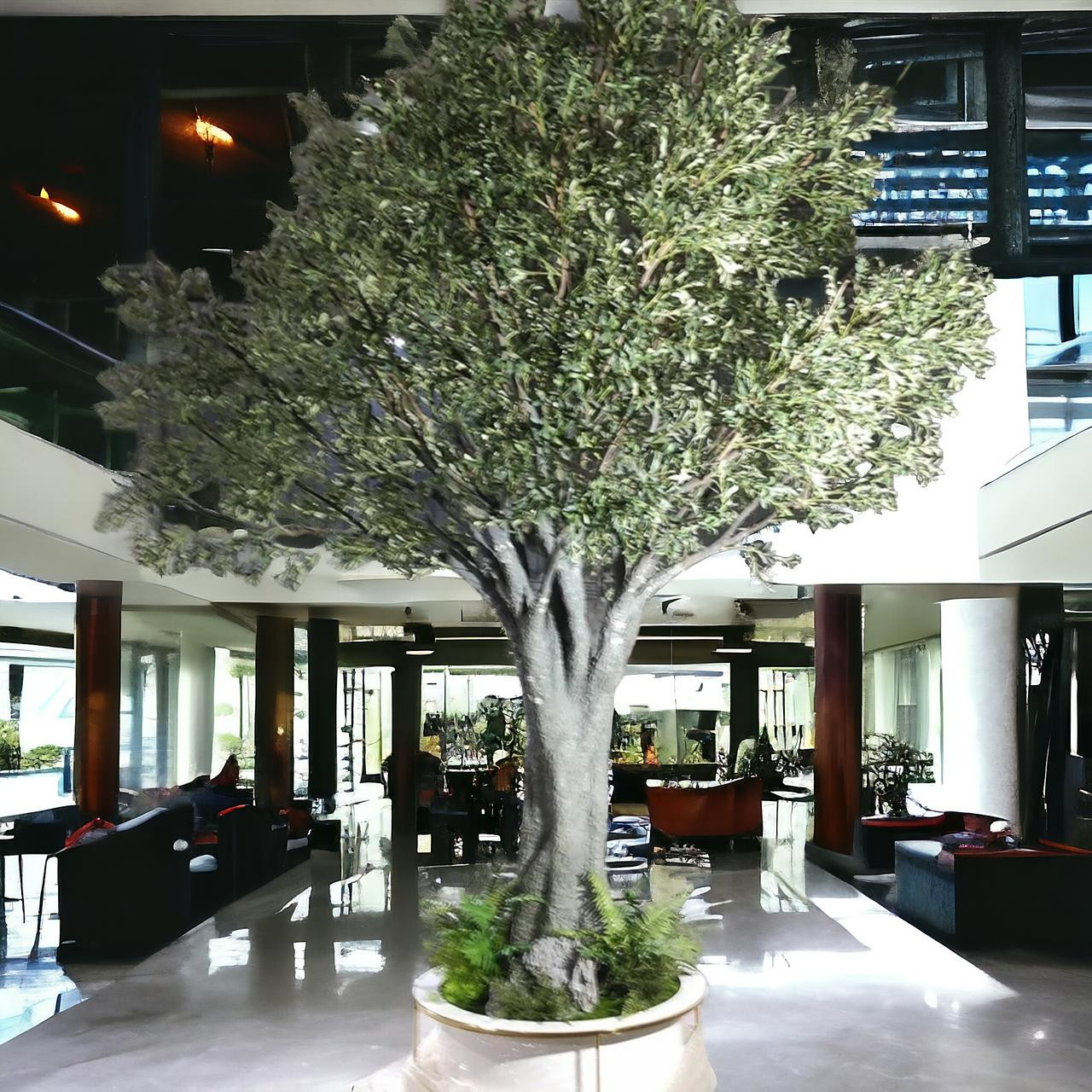Exploring the Symbolism of the Olive Branch in Peace and Diplomacy
Aug 11, 2024
Exploring the Symbolism of the Olive Branch in Peace and Diplomacy
When we think of peace, one of the most enduring symbols that comes to mind is the olive branch. This symbol has been associated with peace and reconciliation for thousands of years, and it continues to hold significance in modern times, especially in diplomatic contexts. But why the olive branch? How did it come to represent peace, and how has it been used throughout history in diplomacy? In this essay, we’ll explore the origins and evolution of the olive branch as a symbol of peace, looking at its significance in various cultures and its role in international relations.
The Ancient Origins of the Olive Branch as a Peace Symbol
The use of the olive branch as a symbol of peace can be traced back to ancient civilizations, particularly in the Mediterranean region where olive trees are native. The olive tree itself has long been revered for its longevity, resilience, and the valuable resources it provides—most notably, olive oil. In many ways, the tree’s qualities made it a fitting symbol for peace and prosperity.
Greek Mythology and the Olive Branch
One of the earliest recorded uses of the olive branch as a peace symbol comes from Greek mythology. According to legend, the city of Athens was named after the goddess Athena, who gifted the city an olive tree. This tree was said to symbolize peace, wisdom, and prosperity, and it became a sacred symbol for the Athenians. The olive tree was so revered that it was planted in sacred groves and its oil was used in religious rituals.
In addition to its association with Athena, the olive branch appears in the story of the Great Flood, a myth that parallels the biblical story of Noah’s Ark. After the floodwaters receded, a dove returned to Noah with an olive branch in its beak, signaling the end of the flood and the restoration of peace between God and humanity. This image of the dove and the olive branch has become one of the most widely recognized symbols of peace.
The Olive Branch in Roman Culture
The Romans, who inherited much of their culture from the Greeks, also adopted the olive branch as a symbol of peace. Roman envoys would carry olive branches when they sought to negotiate peace treaties or deliver messages of reconciliation. This practice reinforced the olive branch’s role as a diplomatic symbol, representing a desire for peaceful resolution rather than conflict.
In Roman art and coinage, the olive branch frequently appears in depictions of Pax, the goddess of peace. She is often shown holding an olive branch, underscoring its association with peace and harmony. The olive branch’s symbolism was so deeply ingrained in Roman culture that it persisted even after the fall of the Roman Empire, influencing subsequent European traditions.
The Olive Branch in Religious Contexts
The symbolism of the olive branch extends beyond Greek and Roman culture and is also prominent in religious traditions, particularly in Judaism and Christianity. These religious associations have further solidified the olive branch’s role as a symbol of peace and reconciliation.
The Olive Branch in the Bible
In the Old Testament, the olive tree is mentioned frequently, often as a symbol of God’s blessing and favor. The olive branch, in particular, is a symbol of peace and divine promise, as seen in the story of Noah and the Great Flood mentioned earlier. The dove’s return with an olive branch signified the end of God’s wrath and the beginning of a new covenant with humanity.
This story has had a profound impact on Christian symbolism, where the olive branch represents not only peace but also the hope of salvation and the renewal of life. In Christian art, the olive branch often appears alongside the cross, the lamb, or the dove, further emphasizing its association with peace and redemption.
The Olive Branch in Jewish Tradition
In Judaism, the olive tree is also a symbol of peace and prosperity. The olive oil produced from the tree was used to anoint kings and priests, signifying their divine appointment and the hope for a just and peaceful reign. The olive tree’s resilience and ability to thrive in harsh conditions made it a powerful symbol of endurance and the continuation of life, even in difficult times.
The olive branch’s symbolism in Jewish tradition is closely linked to its agricultural and economic importance. Olive oil was a valuable commodity in ancient Israel, used not only in religious rituals but also in daily life. The olive tree’s ability to produce fruit for many generations made it a symbol of long-lasting peace and stability.
The Olive Branch in Modern Diplomacy
While the olive branch’s roots are ancient, its symbolism has carried into the modern era, where it continues to be a powerful symbol in diplomatic contexts. From international organizations to state emblems, the olive branch remains a universal representation of peace, used to convey a desire for harmony and cooperation.
The United Nations and the Olive Branch
One of the most prominent modern uses of the olive branch is in the emblem of the United Nations (UN). The UN, founded in 1945 in the aftermath of World War II, was established to promote international cooperation and prevent future conflicts. Its emblem features a world map surrounded by a wreath of olive branches, symbolizing the organization’s commitment to global peace and security.
The choice of the olive branch for the UN emblem was deliberate, reflecting the organization’s mission to mediate conflicts and foster diplomacy among nations. The olive branches encircling the globe represent the hope that peace will prevail in all corners of the world. This imagery has become synonymous with the UN and its peacekeeping efforts, reinforcing the olive branch’s role as a symbol of international diplomacy.
The Olive Branch in National Symbols
Many countries have incorporated the olive branch into their national symbols, further cementing its association with peace. For example, the Great Seal of the United States features an eagle holding an olive branch in its right talon and arrows in its left. This symbolizes the nation’s preference for peace, but also its readiness to defend itself if necessary.
The use of the olive branch in national symbols serves as a reminder that peace is not just an abstract ideal, but a goal that nations actively strive to achieve. By incorporating the olive branch into their emblems, countries signal their commitment to peaceful relations with other nations and their desire to resolve conflicts through diplomacy rather than war.
The Olive Branch in Peace Treaties
Throughout history, the olive branch has been used as a tangible symbol during peace negotiations and the signing of treaties. Envoys and diplomats would present olive branches to their counterparts as a gesture of goodwill and a sign of their sincere desire for peace. This practice continues in various forms today, with leaders often exchanging symbolic gifts that include olive branches or olive-related products.
One notable example of the olive branch in peace treaties is the Camp David Accords, signed in 1978 between Israel and Egypt. The accords, which were brokered by U.S. President Jimmy Carter, marked the first peace agreement between Israel and an Arab country. As a symbol of the peace they hoped to achieve, the leaders of Israel and Egypt exchanged olive branches during the negotiations.
The Olive Branch in Popular Culture
The olive branch’s symbolism has also permeated popular culture, where it is often used to represent peace, reconciliation, and hope. From literature and film to visual arts and music, the olive branch continues to be a powerful and recognizable symbol.
Literature and the Olive Branch
In literature, the olive branch frequently appears as a metaphor for peace and resolution. Authors use the symbol to convey themes of forgiveness, reconciliation, and the restoration of harmony. For example, in William Shakespeare’s play Timon of Athens, the olive branch is used as a symbol of peace and friendship, reflecting its traditional associations.
The olive branch also appears in modern literature, often as a symbol of hope and the possibility of a peaceful future. In dystopian novels, where conflict and turmoil are common, the olive branch can serve as a poignant reminder of what has been lost and what can still be achieved.
The Olive Branch in Film and Visual Arts
In film and visual arts, the olive branch is often depicted in scenes of reconciliation or the aftermath of conflict. Filmmakers and artists use the symbol to evoke a sense of closure, healing, and the desire for a better future. The image of a character offering an olive branch can be a powerful visual metaphor for their willingness to forgive and move forward.
The olive branch’s appearance in visual arts is not limited to traditional media; it also features prominently in political cartoons and other forms of social commentary. Cartoonists often use the olive branch to satirize or critique diplomatic efforts, highlighting the complexities and challenges of achieving peace in a divided world.
Music and the Olive Branch
The olive branch has even found its way into the world of music, where it is often referenced in songs about peace, love, and unity. Musicians use the symbol to convey messages of hope and reconciliation, urging listeners to embrace peace and work towards a more harmonious world.
For example, in Bob Dylan’s song “Blowin’ in the Wind,” the olive branch is implied in the broader message of peace and the search for answers to life’s most pressing questions. The song’s lyrics reflect the longing for peace and the hope that it can be achieved if people come together and make a conscious effort.
The Enduring Legacy of the Olive Branch
The olive branch’s symbolism has endured for millennia, evolving from its ancient origins in Greek and Roman culture to its modern role in diplomacy and popular culture. Its association with peace, reconciliation, and hope has made it a universal symbol, recognized and respected across cultures and generations.
The Olive Branch as a Universal Symbol
One of the reasons the olive branch has remained such a powerful symbol is its universality. Unlike other symbols that may be tied to specific cultures or religions, the olive branch transcends these boundaries. It is a symbol that speaks to the shared human desire for peace and harmony, making it relevant in any context.
The olive branch’s universality is also reflected in its use in various international organizations and movements dedicated to peace. Whether it’s the United Nations, Amnesty International, or the World Peace Council, the olive branch is often featured in their logos and emblems, symbolizing their commitment to a peaceful world.
The Future of the Olive Branch Symbolism
As we look to the future, it’s likely that the olive branch will continue to be a symbol of peace and diplomacy. In an increasingly interconnected world, where conflicts and disputes are often played out on the global stage, the olive branch serves as a reminder of the importance of dialogue, negotiation, and mutual understanding.
In the digital age, where symbols can spread quickly and reach a wide audience, the olive branch has the potential to become even more prominent. Social media platforms, for example, have enabled activists and organizations to use symbols like the olive branch to promote peace and advocate for diplomatic solutions to conflicts.
The Olive Branch and Personal Peace
Finally, it’s worth considering how the olive branch can serve as a symbol of personal peace and reconciliation. In our daily lives, we often face conflicts and challenges that require us to make peace with others or with ourselves. The olive branch can be a powerful reminder of the importance of forgiveness, understanding, and the pursuit of harmony.
Whether it’s offering an olive branch to someone we’ve wronged or accepting one from someone seeking our forgiveness, this ancient symbol can guide us towards a more peaceful and fulfilling life. In this way, the olive branch’s symbolism extends beyond the realm of international diplomacy and into our personal experiences, making it a truly timeless and meaningful symbol.
Conclusion
The olive branch is much more than just a symbol; it’s a representation of our collective desire for peace, harmony, and reconciliation. From its ancient roots in Greek mythology and Roman culture to its modern use in diplomacy and popular culture, the olive branch has remained a powerful and enduring symbol of peace. Whether it’s depicted in religious texts, national emblems, or popular media, the olive branch continues to inspire hope and remind us of the importance of striving for a peaceful world.
As we navigate the complexities of the modern world, the olive branch serves as a symbol of the possibilities that lie ahead—a world where conflicts can be resolved through dialogue, understanding, and mutual respect. It’s a symbol that encourages us to reach out to others, to extend the hand of peace, and to work towards a future where the olive branch is not just a symbol, but a reality.





